There’s nothing more frustrating than watching your beautiful pumpkin plant produce gorgeous flowers but no plump orange gourds. Over and over, they flower with nothing to show for their work.
You want them to be ready in time for Halloween, or maybe for a fun dinner party where all your guests pick their own homegrown pumpkins to take home with them.
So what’s going on? How can you encourage your plants to produce fruit?
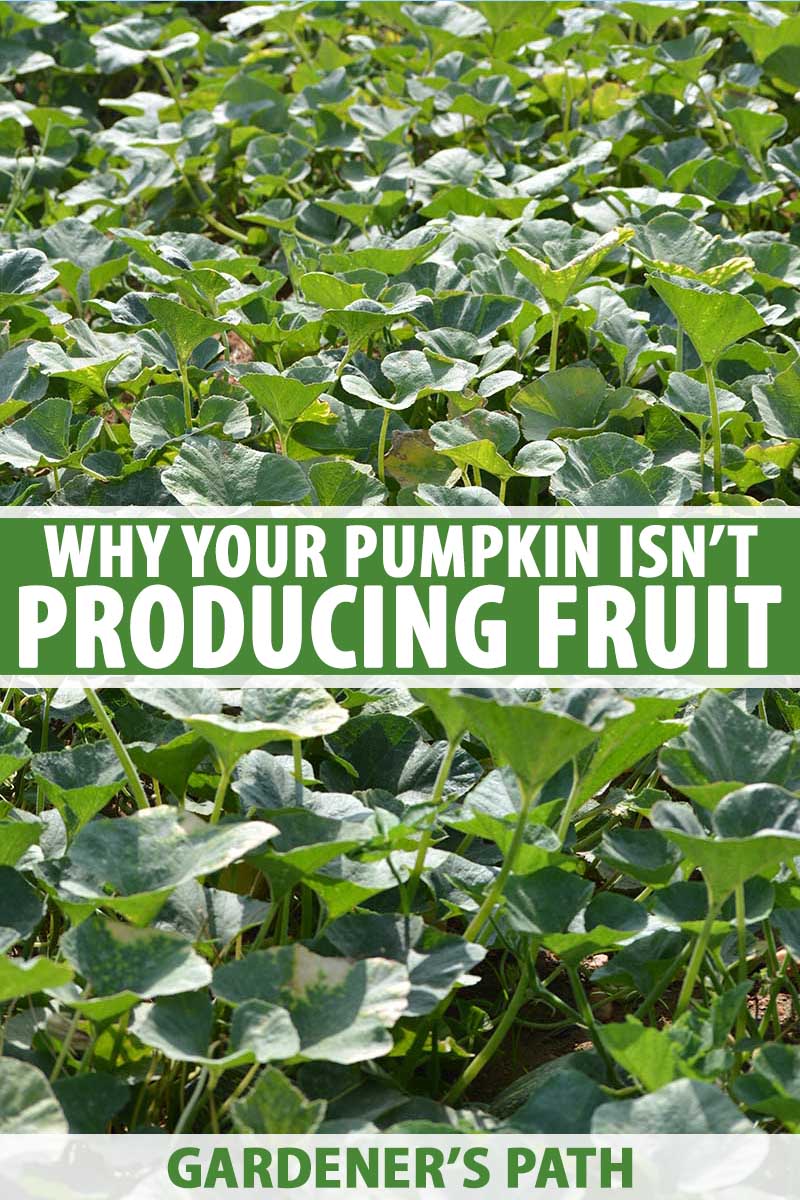
We link to vendors to help you find relevant products. If you buy from one of our links, we may earn a commission.
In this article, I’ll reveal the top 5 reasons why your pumpkin isn’t producing fruit — and how to fix them.
Why Isn’t My Pumpkin Fruiting?
1. No Pollination
The most likely reason why your healthy vines aren’t producing fruit is that the female flowers aren’t being pollinated.
So let’s talk about the birds and the bees of the pumpkin world for a second.
The very first flowers you see on the vine will be male.
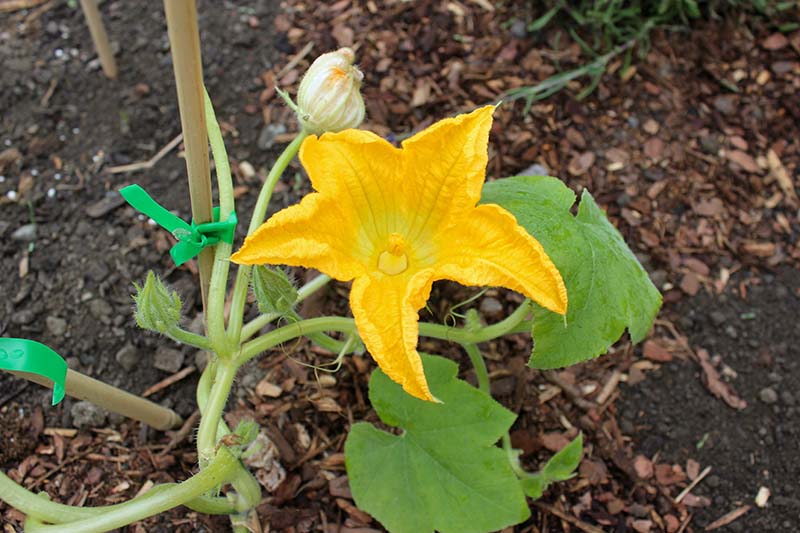
These lack an ovary, which female flowers have: a clearly visible bump or nodule behind the petals.
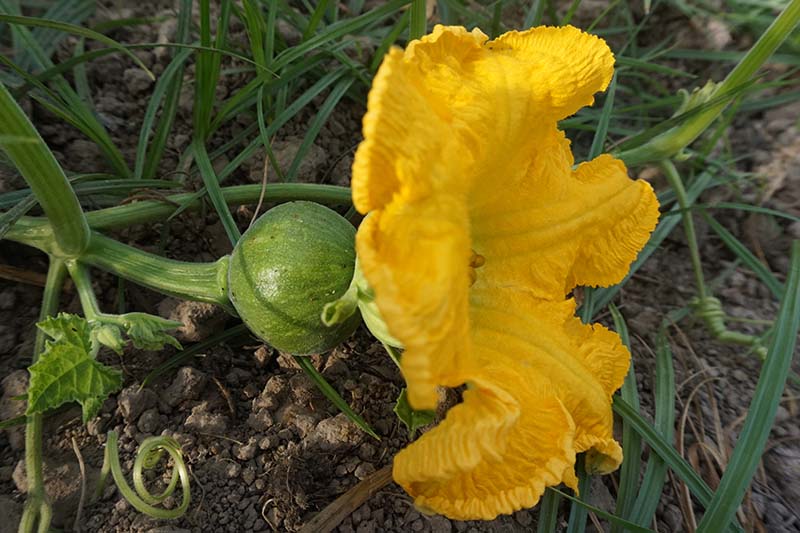
Male flowers, called staminate flowers, begin to bloom about 55 days into a pumpkin’s overall growing cycle, and they’ll be the only flowers you see for one to two weeks.
This is because the male flowers are there to basically yell out to the bees in the area that there’s pollen and nectar for the taking.
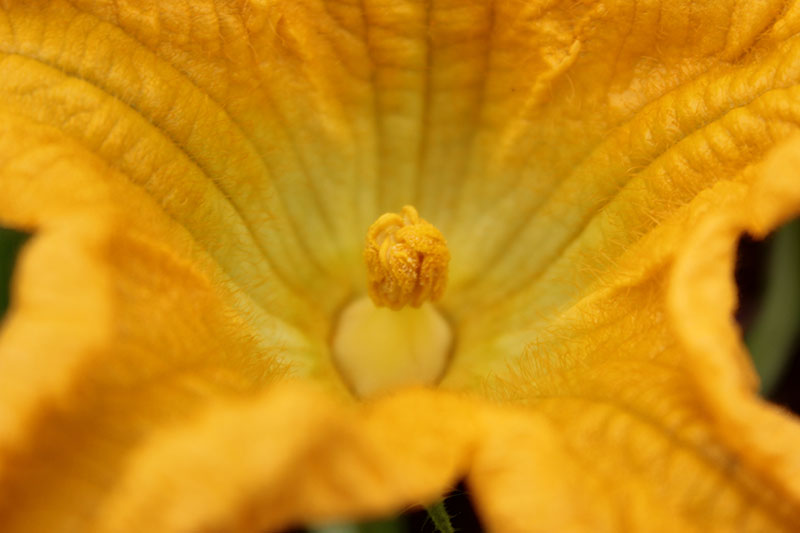
That way, when the female – or pistillate – flowers bloom, the bees will already know where to get their food.
They’ll transfer pollen from the male flowers’ stamens to the female flowers’ stigmas, resulting in the ovary at the base of the female flower growing into a nice, fat pumpkin.
Both male and female flowers open at dawn and close by the end of the day. The window for pollination is short!
If you notice that you only have male flowers, this might be the key to why you don’t yet see fruit: the female flowers may not be ready to open yet.
If, on the other hand, you see female and male flowers open at the same time but the ovaries never enlarge and instead shrivel up and drop off, you can probably blame a lack of pollination.
A shortage of bees in the area is a likely culprit. While other insects can pollinate pumpkin flowers, bees are typically the best pollinators, according to Alex Surcica of the Penn State Extension Program.
If you don’t have many bees because locally-used pesticides are harming them, or parasites or poor nutrition have taken their toll, you can plant bee-friendly plants like lavender in your pumpkin patch to improve pollination rates next season.
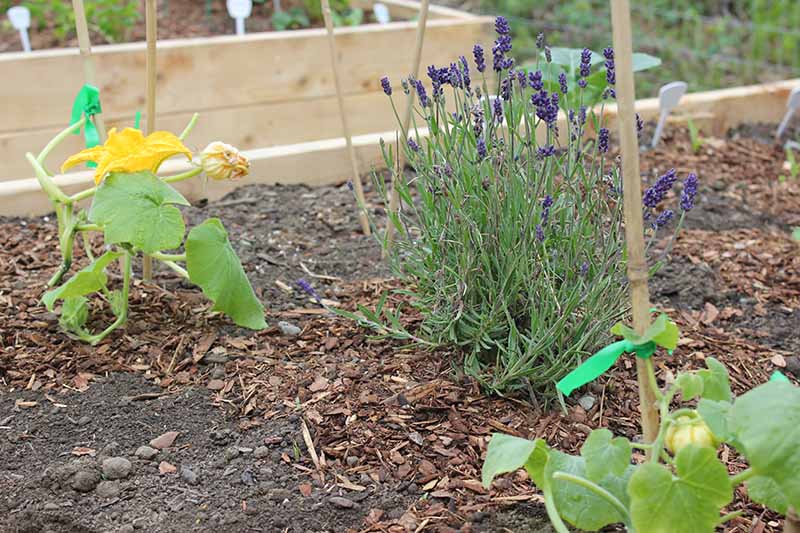
Keep in mind that introducing pollinator-friendly flowers may still be insufficient.
You may need to hand-pollinate your pumpkins by breaking off the open male flowers and brushing the pollen-filled stamens over every part of the female flowers’ segmented stigmas, one at a time.
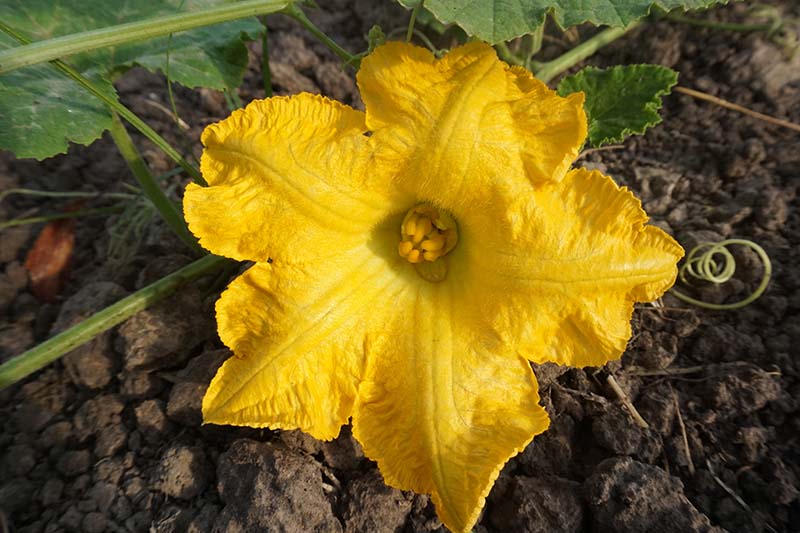
If a lack of pollination is what’s keeping your gourds from forming, hand-pollination should greatly increase your chances of seeing those ovaries turn into squash.
Read more about hand pollination here.
2. Too Much Heat
Pumpkins love the sun, but they don’t like sweltering heat.
I imagine a female pumpkin under heat stress to be like me, on the Fourth of July in Oklahoma, at nine months pregnant.
For some reason I had decided to tromp around town with friends and watch a fireworks show in 92-degree weather with 60 percent humidity. I could barely breathe.
When flowers or baby gourds get too hot – with several days in a row of temperatures 90°F or above and nighttime temperatures of 70°F or above – the heat stress can cause them to drop flowers, or the developing fruits.
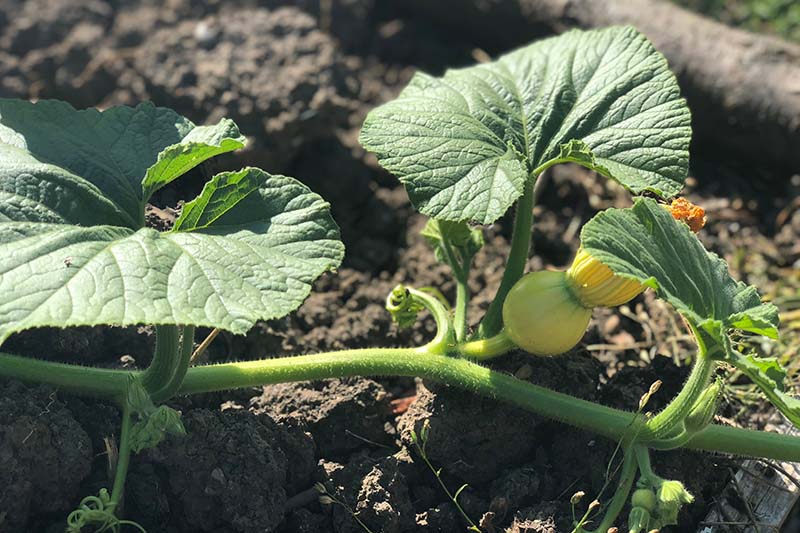
If they don’t actually fall off the plants, flowers may shrivel and cease to grow.
Under that type of stress, the plant simply doesn’t have enough energy to do the hard work of producing fruit.
In addition, high temperatures around the time of pollination can prevent the pollen from germinating and fertilizing the female flower.
So keep an eye on the weather in your area, and if stressful conditions are in the forecast, provide your plants with shade.
Old sheets tied over hoops work well, as do row covers or some other type of shade cloth from the gardening store.
Be sure to provide adequate irrigation during hot periods as well, and lock the moisture in with a light-colored mulch that deflects sunlight.
3. Overly Moist Soil
Like other members of the Cucurbitaceae family, pumpkins need lots of water because they’re made up of a lot of water – around 90 percent.
But too much water, especially in the case of waterlogged roots, can cause issues with fruit production. It’s important that the soil is well-draining.
Too much water can cause roots to become stressed and stop producing flowers, especially female flowers. It can even cause young fruits to shrivel and die.
Not cool!
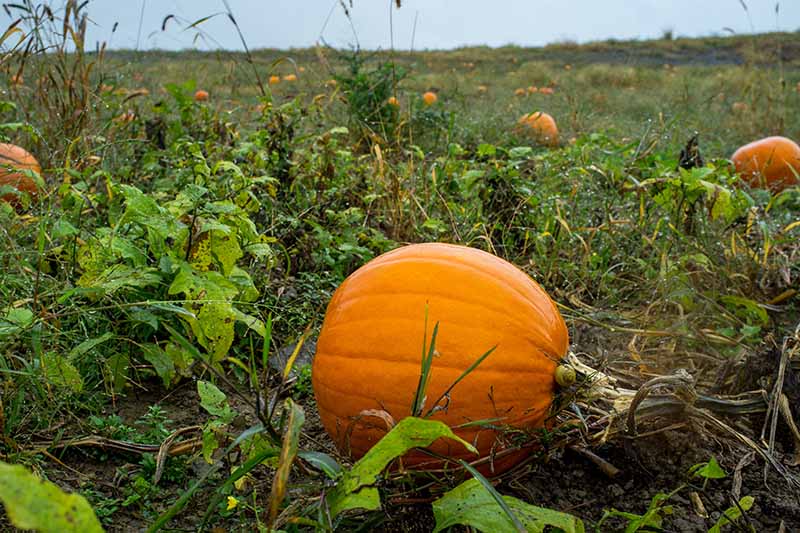
If it’s going to rain (and rain and rain) in your area, protect your pumpkins from excessive moisture by covering them with a plastic row cover, at least until the rain stops.
The plants need about an inch of water per week. To check the moisture level, stick your finger into the soil.
If it feels damp (even if soil looks dry on the surface), there’s no need to add water.
You can also monitor local rainfall with a rain gauge.
4. Drought Conditions
On the flip side of the too-much-moisture problem is the not-enough-moisture issue.

Drought conditions can cause a plant to produce many more male flowers than female flowers, which doesn’t necessarily eliminate the growth of fruit, but usually reduces it.
When a plant doesn’t have the nutrients and energy it needs to produce many female flowers, it won’t produce as much fruit.
If drought conditions abound in your area, make sure you give those pumpkins enough water.
5. Excessive Nitrogen
Maybe your plant isn’t bearing fruit because you’ve got lots of vines and leaves but no flowers. In this case, the soil might contain too much nitrogen.
While your gourd plant definitely needs this nutrient, it doesn’t need excessive amounts — especially if there’s a shortage of available phosphorus, which directly contributes to flowering and fruiting.
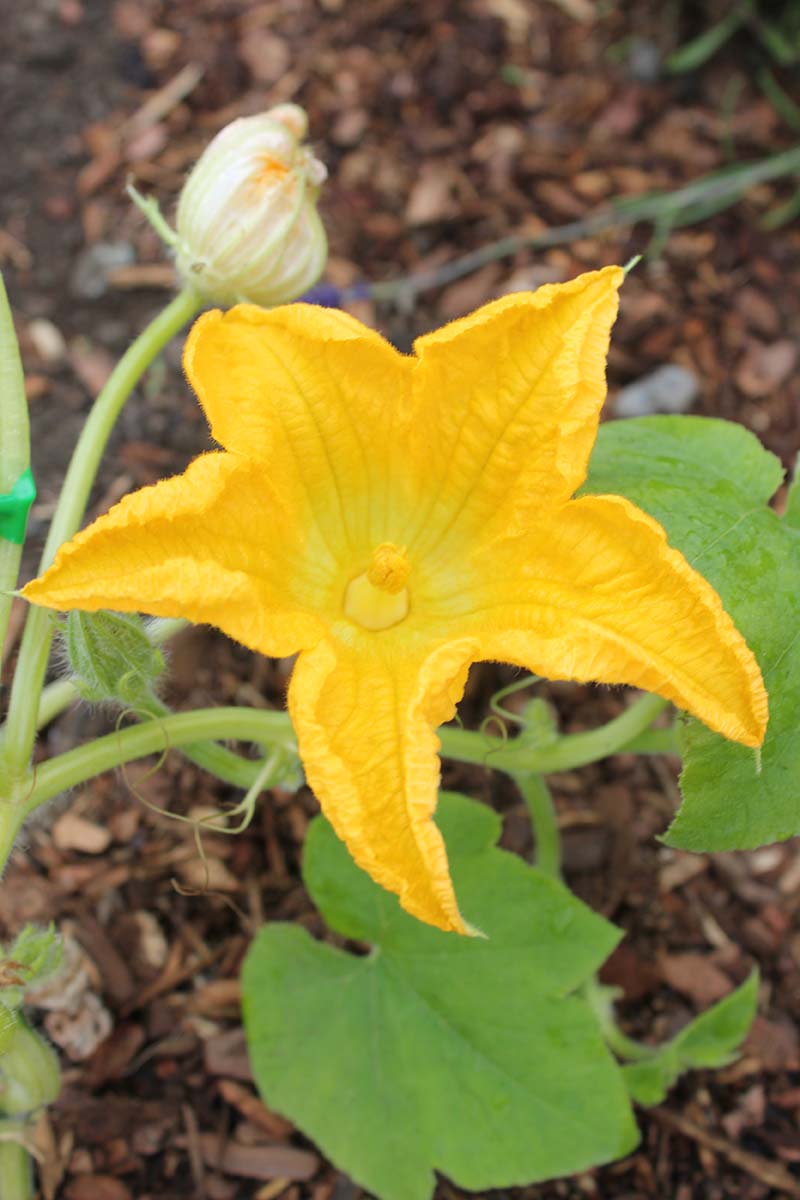
Switch from fertilizing with a balanced 10-10-10 NPK fertilizer and instead add a 5-10-10 product, or fish bone meal, which is high in phosphorus.
In a week or two, you should see flowers begin to form.
Read more about fertilizing pumpkins here.
Orange Delight Is On the Way
Now that you know the top five reasons why a pumpkin isn’t producing fruit, plus how to fix them, you can look forward to an abundant harvest of orange beauties in a few months.
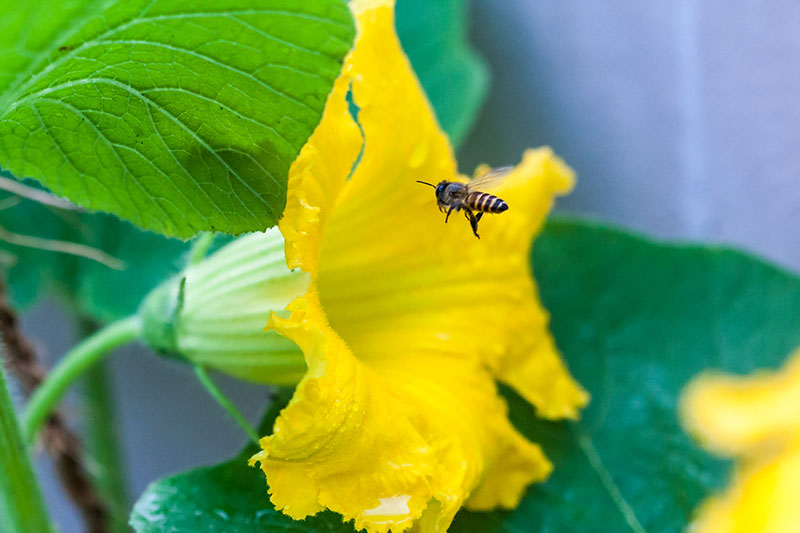
And you’ll feel all the more proud of your efforts if you’ve worked through a problem like lack of fruit and come out victorious.
Have you ever had to coax fruit from your plants? Let us know in the comments below!
And remember to check out these articles on growing pumpkins for more tips:
- How to Choose the Best Halloween Pumpkins to Grow in Your Garden
- 5 Reasons Your Pumpkin Vine Isn’t Blooming
- How to Train Pumpkins to Grow on a Trellis
- 11 of the Best Pumpkins to Grow for Pies, Puree, and Other Treats
Photos by Laura Melchor © Ask the Experts, LLC. ALL RIGHTS RESERVED. See our TOS for more details. Uncredited photos: Shutterstock.
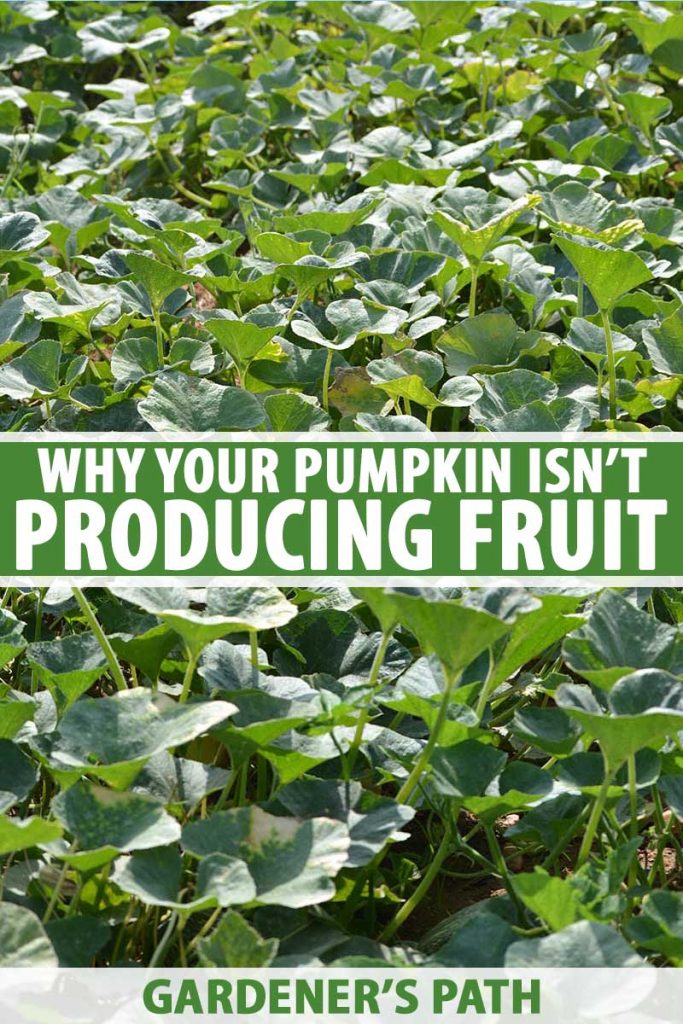
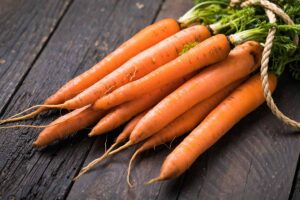


When I checked a fallen pumpkin bud and a flower, I was surprised to see there are lots of worms inside of it. Do you know why there are worms and how to get rid of them?
Sorry for our very delayed reply! If you’re located in the south, these may be pickleworms (Diaphania nitidalis). Pesticides can be effective against them, and damaged portions of plants as well as any rolled leaves protecting the pupating larvae should be removed and destroyed.
this is my first year growing pumpkins and I was having trouble woh pollination so I hand pollinated yesterday. Fingers crossed.
Love the photo! How is it looking now? Let us know if you need any help!
I planted 3 pumpkins in a wooden pot at my home and had 6 female flowers dead due to lack of male flowers. There are 5 more small female flowers growing but the male flowers stopped growing. Will you post me some adult male flowers by air mail and I pay you all the expense plus the flower cost. I live in Hong Kong but I wish to buy it as it is nice for my grandsons to see the pumpkins growing at home. Many thanks. May God bless you free from Covid 19.
I have cucumber beetles eating up the flowers and buds. Other plants never having any buds or flowers I have tried everything to rid these pests with no luck, and much expense trying. My plants were so green and growing great. Then, one day leaves turning yellow and drying up. I also noticed eggs on the underside of the leaves. All within a day or so apart. I have bought several different products Neem, seven dust, and several products for powdery mildew. Some plants are growing new flowers, but the yellowing leaves are now showing signs of tiny brown specks… Read more »
Hi Patsy – We’re sorry to hear of your troubles with cucumber beetles. They are worse in some years than in others. Moisture-stressed plants are more vulnerable to pests and diseases. Once underway, an infestation is hard to eradicate. In addition, cucumber beetles may carry diseases like bacterial wilt or cucumber mosaic virus that also destroy foliage. Neem oil and Sevin can effective if an infestation is caught early. Dry weather is necessary for application, and it can take days or weeks and multiple treatments for complete eradication. When growing pumpkin vines, you can apply a preventative application of food… Read more »
I’m very new to growing pumpkins and I’m trying to grow them in containers (it’s all the room I have) the flowers grow but once they close they fall from the plant 😢 it almost looks like they have been cut off it’s a very clean cut -any advice on what I can/should do I’m in the uk (north east)
Thank you
Hi Bev –
It’s not unusual for the first blossoms to be male. Female flowers should soon follow and produce fruit.
I’ve never grown pumpkins and gourds before, so this posting was really, really helpful. Thank you!
Thanks for reading, Reynolds. Good luck!
Laura, I’m having the all Male Flower issue with my pumpkins. No Female Flowers, after 45 days.. Can I start cutting the vines back to encourage new vine growth, possibly to encourage Female Flowers?
Sorry to hear it, Andy! When did you plant and where are you located? Hot weather or issues with watering may be the issue. You might want to check out our guide to understanding why a pumpkin vine isn’t blooming as well. Giving the vines a trim shouldn’t hurt, but it may be getting too late in the season to see a harvest unfortunately.
This is my first year growing pumpkins and my son and I planted about 25 seeds mid May in our empty mulch bed. It gets plenty of sun and is in direct path of our sprinklers. It’s now Sept 1; We have lots of male flowers, few females. The vines are growing out of control and there’s only about 5-6 actual pumpkins. Is there too much nitrogen? Also which stems/ leaves am I able to trim back?
Hello, Patti, thanks for providing these helpful photos. There could be a few different issues here. First of all, these are hardy garden vegetables, and you probably had most of the plants sprout. Usually a space like a mulch bed could support maybe six or eight vines. So your 20 or more plants may be fighting for water and nutrition. But I’m impressed that they do have pumpkins at all, so you’re definitely in the ballpark! Consider pruning a bit, but take this caution to heart from our guide to pruning: Before you do any trimming, wait until they are… Read more »
I wish I had found this website a couple of months ago. This was such a clear and informative article and I was immediately able to identify the reason for my zero pumpkin harvest; no pollination! 🤦♀️Thanks for some excellent tips. I will incorporate lavender and other flowers to entice bees and butterflies into my garden next year.
Hello Rozz, and thanks for reading and offering our staff kind words.
Glad you have a battle plan for next year. Be extra sure you’re not growing the pumpkins near any lawns that have been sprayed with pesticides, yours or the neighbors. They can decimate the bee population quickly.
Also, think about hand pollinating if needed. Our guide here offers instructions.
Good luck, and please let us know how you fare.